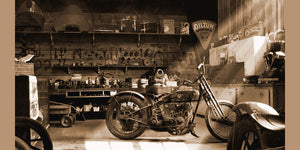Important Motorcycle Parts NZ for Peak Performance and Security
Important Motorcycle Parts NZ for Peak Performance and Security
Blog Article
Mastering Bike Gears: Exactly How to Optimize Your Riding Experience
In the realm of motorcycling, grasping the art of equipment adjustment is essential for improving your riding efficiency. Effectively comprehending and using motorbike gears can considerably influence gas, control, and velocity effectiveness, changing a typical adventure right into a smooth, exhilarating journey. By incorporating precise change timing and adapting equipment choice to numerous road problems, riders can make sure ideal engine performance and safety and security. The subtleties of clutch control, throttle coordination, and gear technicians beckon a deeper exploration, promising to unlock the full potential of your machine. How can these strategies be utilized to really enhance your riding experience?
Understanding Gear Mechanics
How do the ins and outs of equipment auto mechanics affect bike performance? At the core of motorbike dynamics, equipment technicians play a pivotal function in converting engine power right into activity, inevitably dictating speed and control. Gears, diligently crafted elements, enable cyclists to enhance torque and rate, ensuring a smooth transition with various surfaces and velocities. The gear ratios, meticulously designed, establish the connection in between engine changes and wheel turns, affecting acceleration and fuel effectiveness.
Recognizing gear mechanics starts with recognizing the importance of the gearbox, which houses numerous equipments of varying dimensions. These gears engage with a procedure understood as meshing, where teeth of various gears engage to send power.
Moreover, the concept of equipment moving is indispensable to taking full advantage of performance. Timely and smooth shifts make sure that the engine operates within its ideal power band, protecting against unnecessary strain and enhancing longevity (mx parts nz). By comprehending these mechanical details, motorcyclists can achieve an unified blend of control, effectiveness, and power, boosting their riding experience
Timing Your Shifts
Shift timing proficiency is crucial for optimizing motorcycle performance and improving the riding experience. Effectively timed shifts ensure that the engine runs within its optimum power band, which is essential for preserving control, accomplishing smooth velocity, and making certain the durability of the bike. Riders should develop an instinctive feeling of when to shift equipments, which includes recognizing the connection between engine revolutions per minute (RPM) and speed.
To master shift timing, pay attention to the engine's noise and really feel, as these give important hints about when to change equipments. When the engine comes close to the top range of its power band without reaching the redline, the ideal change point typically occurs - motocross gear. Shifting as well early can lead to an absence of power, while changing too late may create unnecessary engine stress
In addition, road conditions and riding style impact change timing. In comparison, during highway riding, fewer shifts at greater rates can be much more ideal.
Enhancing Gas Efficiency
While grasping motorcycle gears is crucial for performance, improving gas effectiveness is equally vital for both financial and ecological factors. Optimum gas usage not only minimizes functional expenses yet additionally minimizes the environmental impact of riding. To accomplish this, one need to recognize the detailed partnership in between equipment option and engine efficiency.
Riding in a greater gear at reduced speeds can lead to engine lugging, which is damaging to both gas economic climate and engine health and wellness. On the other hand, riding in reduced equipments at high rates results in unnecessary gas consumption.
Furthermore, normal upkeep plays an essential duty in gas performance. Making sure that the motorbike is well-tuned, with tidy air filters and properly blew up tires, can decrease and improve aerodynamics fuel wastage. Furthermore, embracing a riding style that accepts gradual velocity and smooth deceleration can contribute to much better gas economy.

Techniques for Smooth Transitions
Achieving smooth equipment shifts is fundamental to improving the riding experience and making certain the long life of a bike's transmission system. Appropriate equipment moving not just adds to a smooth trip however additionally minimizes damage on the mechanical components. To understand the art of smooth transitions, riders should concentrate on a couple of crucial strategies.

Secondly, clutch control plays a pivotal function. Involving and disengaging the clutch smoothly requires method. The clutch lever need to be released progressively, permitting a seamless transfer of power from the engine to the wheels without triggering a jolt or abrupt motion.

Adjusting to Road Conditions
Navigating varied road conditions is a critical ability for any motorcyclist aiming to preserve control and safety. Whether you're riding on wet surface areas, gravel roadways, or navigating sharp turns, your capability to adapt motorcycle shop your gear use and riding method is vital. Understanding how to change your equipments suitably can substantially affect traction and security, ensuring a much safer trip.
In contrast, when riding on gravel or unequal terrain, lower gears are more suitable. Lower gears supply much better control and enable you to respond even more promptly to unforeseen modifications in the roadway surface area.
Sharp curves require specific equipment administration to balance rate and control. Downshifting before entering a curve can aid preserve momentum while making certain the bike stays stable throughout the turn. Regular method in diverse conditions boosts your capability to respond and forecast to modifications in road appearance and incline.
Conclusion
Grasping bike equipments significantly enhances the riding experience by boosting gas, acceleration, and control performance. An extensive understanding of equipment mechanics and specific shift timing ensures the engine runs within its optimal power band, while smooth changes through reliable clutch and throttle sychronisation increase convenience and performance. Adjusting equipment option to different road conditions, such as utilizing higher equipments on wet surfaces and lower gears on gravel, more enhances handling and security. Ultimately, these skills elevate the overall journey.
Comprehending equipment auto mechanics starts with acknowledging the significance of the transmission, which houses numerous gears of varying dimensions. These equipments connect via a process known as meshing, where teeth of different equipments engage to transmit power (motocross parts nz). Gentle adjustments to the throttle during gear shifts can protect against jerky movements and maintain a constant riding rate
Whether you're riding on wet surfaces, gravel roads, or navigating sharp turns, your capability to adjust your gear use and riding method is paramount. Adapting gear selection to different roadway problems, such as making use of greater gears on wet surfaces and lower gears on crushed rock, further enhances handling and security.
Report this page